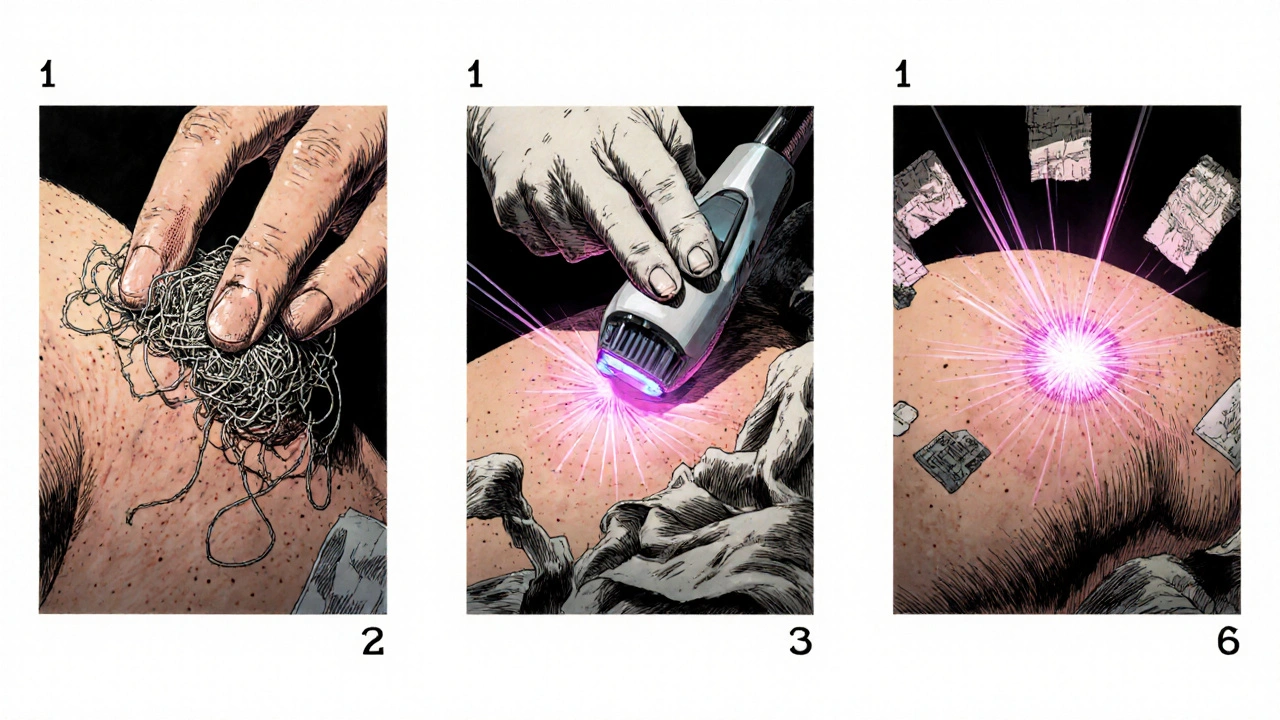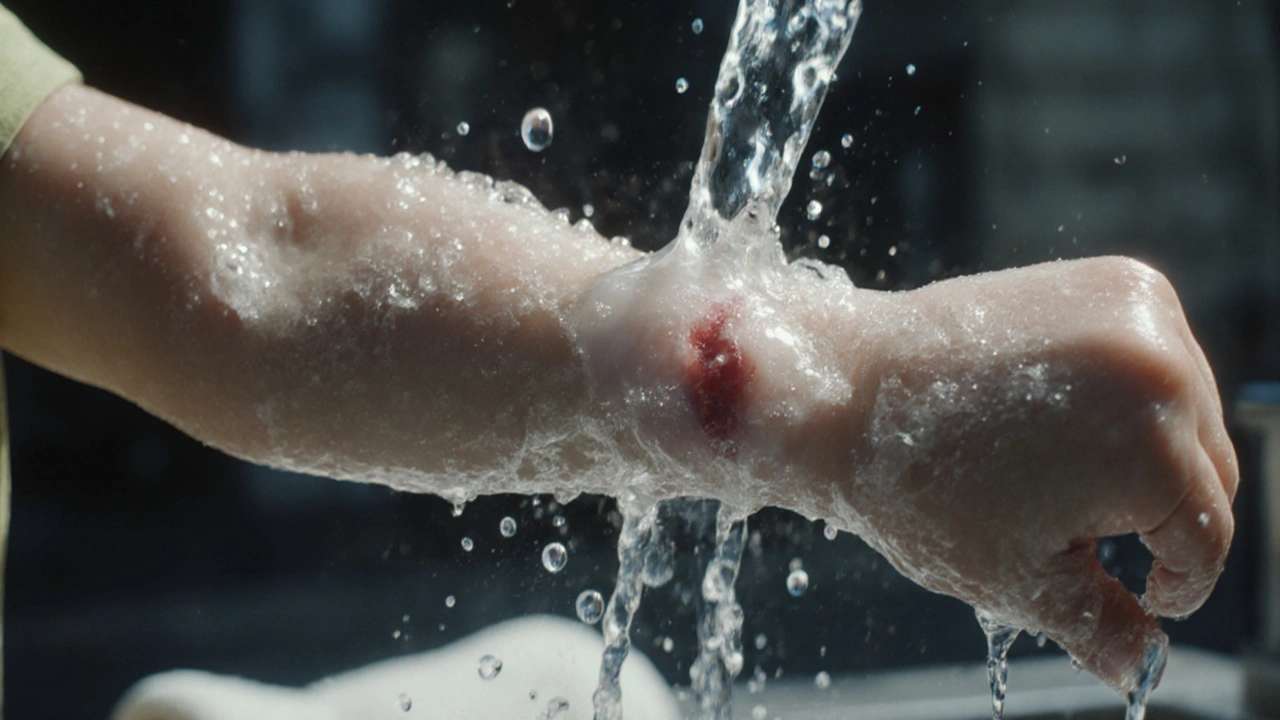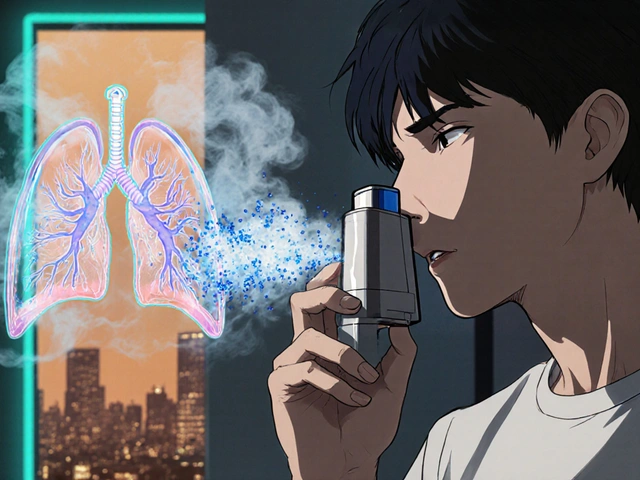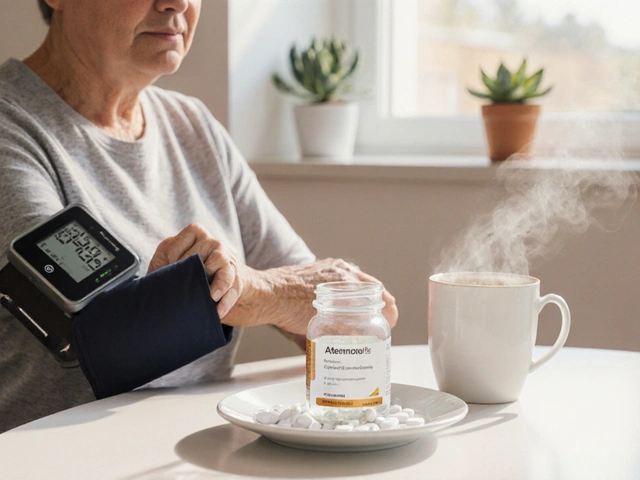Animal bites don’t just hurt-they leave marks that last. Whether it’s a dog nip during play, a cat scratch that turned infected, or a wild animal encounter, the scar left behind can be more than just skin deep. Many people assume scars fade on their own, but that’s not always true. Animal bites carry bacteria, cause deeper tissue damage, and often lead to raised, discolored, or tight scars if not treated right from the start. The good news? You can significantly reduce their appearance with the right steps, and it’s not as complicated as you might think.
Start with proper wound cleaning
The moment you’re bitten, cleaning the wound matters more than you realize. Animal mouths carry bacteria like pasteurella, staphylococcus, and even rabies in rare cases. If you don’t clean it properly, infection sets in-and infection turns scars into thick, red, itchy lumps called hypertrophic scars or even keloids.Here’s what to do right away: rinse the bite under running water for at least five minutes. Use mild soap around the area, but don’t scrub the wound itself. Gently pat it dry with a clean towel. Then apply an antiseptic like povidone-iodine. Don’t use hydrogen peroxide-it kills healthy cells along with bacteria. After cleaning, cover it with a sterile bandage. If the bite is deep, bleeding won’t stop, or you feel feverish, see a doctor immediately. Antibiotics might be needed to prevent infection before the scar even forms.
Keep it moist, not dry
A lot of people think letting a wound air out helps it heal. That’s a myth. Dry wounds form harder scabs, which pull on the skin as they shrink. That tension is what turns a small cut into a wide, raised scar. Keeping the wound moist helps skin cells move across the area smoothly, reducing scar thickness.After the first 48 hours, switch from bandages to a thin layer of petroleum jelly or a fragrance-free healing ointment. Reapply twice a day. Studies from the British Journal of Dermatology show that keeping wounds hydrated cuts scar visibility by up to 60% compared to letting them dry out. Silicone gel sheets, often used after surgery, also work well for bite scars. Stick them on for 12 hours a day for at least eight weeks. They flatten scars, fade redness, and reduce itching.
Protect from the sun
New scars are extremely sensitive to UV light. Sun exposure turns them darker-sometimes permanently. A fresh scar from a dog bite on your arm can turn from pink to brown in just a few weeks if you don’t protect it.For the first six months after the injury, cover the scar with clothing or use a broad-spectrum sunscreen with SPF 30 or higher. Reapply every two hours if you’re outside. Zinc oxide-based sunscreens work best because they physically block UV rays instead of absorbing them. Don’t wait until the scar looks healed-start protection the moment the skin closes.
Use silicone and pressure therapy
Silicone gel or sheets are the most proven non-invasive treatment for scars from animal bites. They’re not magic, but they’re backed by over 20 clinical studies. The mechanism? They regulate moisture and create gentle pressure on the scar tissue, which tells your body to stop overproducing collagen.Apply silicone gel twice daily after cleaning the area. If you prefer sheets, cut them to fit the scar and wear them for 12-24 hours a day. Most people see improvement in 4-8 weeks. For larger scars, like those from a wolf or bear attack, compression garments (like tight sleeves or wraps) can help. These are often used by burn patients but work just as well on deep bite scars. The key is consistency-skip days, and results slow down.
Massage the scar
It sounds simple, but massaging your scar is one of the most effective ways to soften and flatten it. When tissue heals after a bite, collagen fibers get tangled like knotted rope. Massage breaks those knots up and realigns them.Start once the wound is fully closed-no open skin. Use a fragrance-free moisturizer or vitamin E oil. Apply gentle pressure with your fingertips and move in small circles for five minutes, twice a day. You should feel a slight tug, not pain. Do this for at least three months. People who do this regularly report scars that are less itchy, less tight, and more flexible. One 2023 study in the Journal of Wound Care found that daily massage improved scar texture in 78% of patients within 12 weeks.

Know when to see a specialist
Not all scars respond to home care. If after three months your scar is still:- Thick and raised above the skin
- Painful or burning
- Spreading beyond the original wound
- Restricting movement (like on a finger or joint)
It’s time to see a dermatologist or plastic surgeon. They can offer treatments like corticosteroid injections to shrink keloids, laser therapy to reduce redness, or even minor surgery to remove overly tight scar tissue. Cryotherapy (freezing) and microneedling are also options for stubborn scars. These aren’t quick fixes-they take multiple sessions-but they can transform a disfiguring scar into something barely noticeable.
What doesn’t work
There’s a lot of misinformation out there. Avoid these common mistakes:- Using lemon juice or vinegar-these are acidic and can burn new skin.
- Applying raw honey or aloe vera directly on fresh wounds-they’re fine for minor burns, but not for deep bites with infection risk.
- Waiting too long to start treatment-the first 6-12 weeks are critical. After six months, scars become much harder to change.
- Ignoring signs of infection-redness that spreads, pus, swelling, or fever means you need antibiotics, not just a cream.
Long-term scar management
Even after your scar looks better, don’t stop caring for it. Scar tissue never regains full elasticity. Over time, it can tighten and pull on nearby skin, especially around joints or the face. Continue moisturizing daily. Stretch the area gently if it’s near a finger, elbow, or neck. Wear sunscreen year-round on the scar. If you notice new stiffness or discomfort, restart massage or consult a physiotherapist who specializes in scar mobilization.Scars from animal bites can fade, but only if you treat them like a healing process-not just a wound. It takes patience, consistency, and the right tools. Most people don’t realize how much control they have over how their scar turns out. Start early. Stay consistent. And don’t assume it’ll just go away.
Can animal bite scars go away completely?
Most animal bite scars won’t vanish entirely, but they can fade to the point of being barely noticeable. With early, consistent care-like silicone sheets, sun protection, and massage-many people reduce redness, flatten raised areas, and improve texture. Complete disappearance is rare, but significant improvement is very common.
How long does it take for an animal bite scar to heal?
Surface skin heals in 1-2 weeks, but the deeper scar tissue continues remodeling for up to two years. The most dramatic changes happen in the first 6-12 months. That’s why treatment should start as soon as the wound closes. Waiting longer than three months makes results slower and less predictable.
Are cat bites worse than dog bites for scarring?
Cat bites are often more dangerous for infection, but dog bites tend to cause worse scarring. Dogs tear and crush tissue, leading to larger, deeper wounds. Cats usually make narrow, puncture wounds that seal quickly, trapping bacteria inside. Both need medical attention, but dog bites are more likely to leave visible, wide scars due to the extent of tissue damage.
Can children’s scars from animal bites be treated the same way?
Yes, but with extra care. Children’s skin heals faster, but they’re also more prone to keloid scars, especially if they have darker skin tones. Use gentle moisturizers, avoid strong chemicals, and supervise massage to prevent irritation. Always check with a pediatrician before using silicone sheets or laser treatments on kids under 12.
Does vitamin E help reduce scars from animal bites?
Topical vitamin E has mixed results. Some people swear by it, but studies show it doesn’t improve scar appearance and can cause contact dermatitis in up to 30% of users. It’s safer to use it sparingly after the wound is fully closed, and only if your skin doesn’t react. Silicone gel and moisturizers with ceramides are more reliable.





